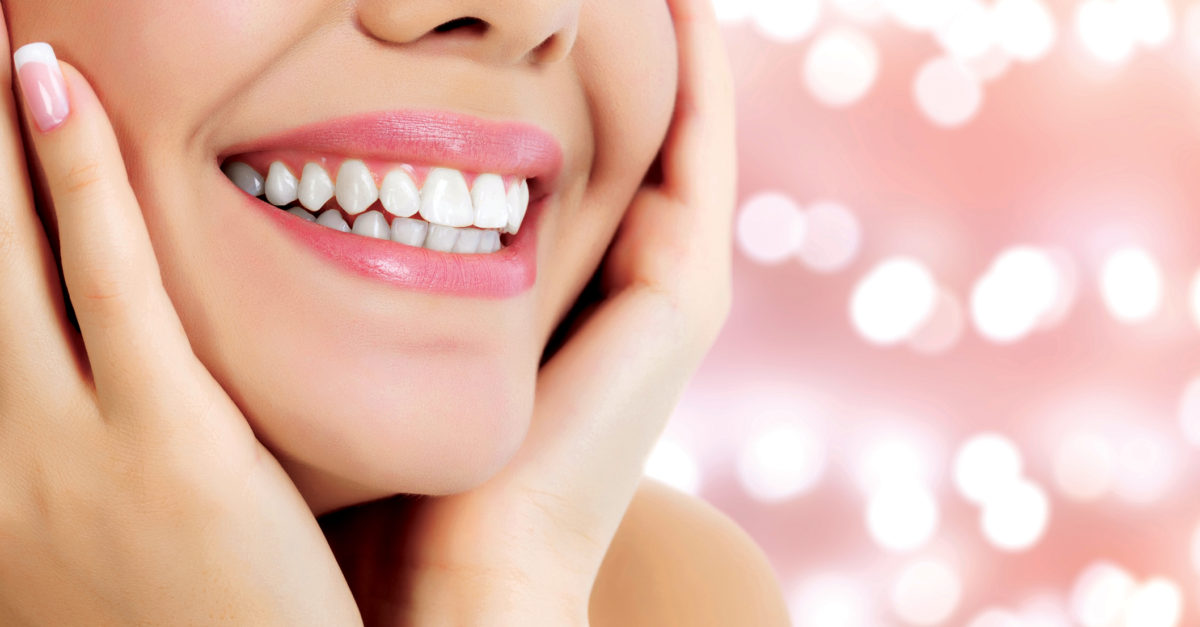They’re everywhere. Just one quick swipe on social media, one flick of the page in our glossy magazines and the perfect pearly whites of our favourite celebrities are shining bright and dazzling us.
With cosmetic treatments becoming increasingly accessible to us mere mortals, let’s explore the options and try to answer some common questions along the way.
As clinicians, it’s certainly not uncommon to be asked by patients about veneers and crowns for the purposes of improving the smile – and sure, these can certainly serve their purpose. However, these procedures involve the destruction of (usually) healthy tooth tissue – and once it’s gone, it’s gone. It also means that the patient is entering an invasive cycle of treatment for the rest of their lives as eventually the work will inevitably need to be replaced.
How about if we could change the smile in a minimally invasive way, avoiding any damage to healthy teeth, in a way which we could maintain forever without too much fuss, whilst achieving a huge aesthetic improvement? Well good news – we can!
According to figures from the ‘National Smile Month’ website, nearly half (48%) of the adult population in the UK are unhappy with their teeth, with 64% of that figure being mainly unhappy with discolouration. For these patients, tooth whitening may be a good place to begin.
Tooth whitening involves using hydrogen peroxide which breaks down into water and oxygen free radicals which then pass through the porous enamel and dentine, breaking down large stained molecules into smaller colourless ones to make the teeth appear whiter. Stains caused by lifestyle choices, such as smoking or tea/coffee drinking, can be improved with whitening as can those caused by factors beyond our control, such as staining resulting from taking tetracycline or from fluorosis.
The process of tooth whitening often involves the dental professional taking some impressions of your teeth to make a mouthguard in which the whitening gels are placed and worn for a period of time (which varies dependant on the brand of gel you are using and you will be advised accordingly). Alternatively, some clinicians opt to use laser whitening where the gel is painted onto the teeth and activated with a light to achieve the desired effect.
Of course, having your teeth professionally whitened at your dental practice for cosmetic reasons may seem expensive when judged against cheaper options such as whitening toothpastes, home whitening kits or even visiting a beauty salon which offers this service – but is it advisable to opt for these? In my opinion, absolutely not.
“Only dentists and appropriately trained dental care professionals with a prescription from a dentist are authorised to use over 0.1% and up to 6% hydrogen peroxide.”
Let’s start with whitening toothpastes and home kits. By law, there can be no more than 0.1% hydrogen peroxide in any over-the-counter whitening products sold in countries within the EU, which is a level that is too low to have a noticeable effect. Only dentists and appropriately trained dental care professionals with a prescription from a dentist are authorised to use over 0.1% and up to 6% hydrogen peroxide. So, effectively, whitening pastes/kits will not achieve the same result as whitening carried out at your dental practice. Some whitening pastes may remove some surface stains, but this is potentially harmful as they are more abrasive than your usual paste. In the long term these are be avoided because they can damage enamel and increase tooth sensitivity. With the home kits, you are often required to create your own mouthguard. This can be tricky and result in a poor fitting tray, leading to gel leaking out, and causing chemical burns to the gums.
“Not only is it illegal for beauty salons to carry out tooth whitening, with or without the use of hydrogen peroxide, it can also be very dangerous as it is unlikely the individual providing the treatment has any dental training, vital for assessing a patient suitability for the procedure.”
Now let’s look at tooth whitening offered in beauty salons. Not only is it illegal for beauty salons to carry out tooth whitening, with or without the use of hydrogen peroxide, it can also be very dangerous as it is unlikely the individual providing the treatment has any dental training, vital for assessing a patient suitability for the procedure. There have been several documented cases in the media of ‘tooth whitening gone wrong’ and if it was me seeking to whiten my teeth, I would not take the risk.
This blog is of course a fairly brief overview of the options available to patients, but if sprucing up your smile has been on your mind for a while, then why not have a chat with your dentist today? And remember – the most drastic treatment options aren’t always needed to achieve A-list aesthetics.
About Harriett Boon:
 Harriett qualified from the University of Liverpool in 2012 with a BSc in Dental Hygiene and Therapy and has worked for Dr Cummings at Hanford Dental practice since 2013. Her main role at the practice is to complete hygiene treatments, ranging from the basic ‘scale and polish’ to more complex treatments for advanced periodontal disease.
Harriett qualified from the University of Liverpool in 2012 with a BSc in Dental Hygiene and Therapy and has worked for Dr Cummings at Hanford Dental practice since 2013. Her main role at the practice is to complete hygiene treatments, ranging from the basic ‘scale and polish’ to more complex treatments for advanced periodontal disease.
Harriet is dedicated to her patients and particularly enjoys helping nervous patients to feel at ease – it’s always very satisfying when people leave with a smile on their face!
A keen traveller who love the outdoors, Harriet can often be found walking in the countryside when she is not in the practice.
